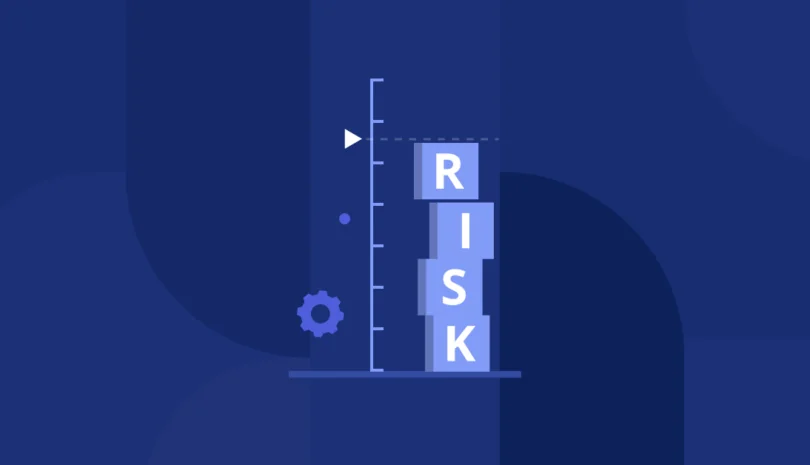There’s a troubling paradox in today’s world of cybersecurity: 91% of CISOs report an increase in third-party cybersecurity incidents, yet only 3% of organizations have full visibility into their supply chain. Businesses rely on third parties to remain competitive, but every new vendor introduces risk. The challenge isn’t just about identifying these risks—it’s about understanding them in context.
Below, we explain why understanding third-party risks in context is important.
Adding to the complexity, only 17% of organizations report that their leadership fully understands third-party cyber risks, while 51% acknowledge limited awareness. Without executive buy-in, many CISOs struggle to secure the funding necessary to protect against growing threats.
This raises a difficult question: Can we ever truly secure the supply chain, or are businesses doomed to always play defense?
The Reality of Third-Party Risk: Why It’s the Weakest Link
Supply chains have expanded exponentially, and with them, attack surfaces. Businesses now integrate with an overwhelming number of vendors, each with their own security vulnerabilities. A staggering 98% of organizations worldwide have connections to at least one breached third-party vendor in the past two years.
Image suggestion: sprawling network of interconnected nodes (representing organizations and vendors) with arrows showing data flow. A few nodes are red to indicate breached or vulnerable vendors. Text on image: 98% of organizations linked to a breached vendor
This interconnectedness creates real consequences:
- The GrubHub data breach is a strong example of third-party risk, where attackers accessed customer and merchant data through a compromised third-party service provider. This highlights how vendor security weaknesses can expose organizations to breaches beyond their direct control.
- The DISA Global Solutions breach, affecting over 3.3 million individuals, underscores how third-party vendors storing sensitive data are prime targets for cybercriminals. Weak security controls in these vendors increase the risk for businesses relying on them.
Despite these risks, 81% of organizations report insufficient budgets to manage third-party security effectively.
Without proper investment, vulnerabilities will remain unresolved, and attackers will further exploit them to infiltrate supply chains.
Why Traditional Risk Management Fails in the Supply Chain
Many organizations still rely on outdated third-party risk management methods—static risk assessments, annual security questionnaires, and one-size-fits-all compliance checklists. But these approaches fail to account for real-time changes in risk exposure.
For example, a vendor might be deemed “low risk” based on a point-in-time assessment. But what if they suddenly gain access to sensitive data? Or if they suffer a breach after the assessment is completed? Without continuous monitoring, organizations are left blind to evolving threats.
Even worse, security leaders face resistance in securing funding for better solutions. Only 17% of executives fully understand third-party cyber risk, making it difficult for CISOs to communicate business implications and justify investment.
To illustrate how vulnerabilities slip through the cracks:
- The Palo Alto firewall exploit demonstrates how vulnerabilities can be chained together, allowing attackers to bypass security controls. This is a reminder that even security vendors themselves can become the weak link in the supply chain.
- The SolarWinds breach is a stark example of traditional risk management’s shortcomings. SolarWinds, an IT management software provider, was widely trusted by enterprises and government agencies, likely perceived as “low risk” due to its niche role and lack of prior high-profile incidents. Yet, in 2020, attackers—believed to be state-sponsored—inserted malicious code into its Orion software updates, compromising up to 18,000 customers, including U.S. federal agencies and major corporations. This breach went undetected for months, exposing how a static assessment could miss a devastating supply chain attack. isk assessments—without continuous context—provide a false sense of security.
Context is King: Why Risk Ratings Alone Aren’t Enough
Many organizations rely on static risk scores to evaluate third-party vendors. But risk isn’t just about a vendor’s security posture—it’s about how that vendor interacts with your business.
Consider two vendors:
- A “low-risk” vendor with access to highly sensitive customer data.
- A “high-risk” vendor with limited access to non-critical systems.
Which one poses the greater threat? Without context, businesses can’t accurately assess third-party risks or make informed decisions.
A better approach to third-party risk management involves:
- Business Criticality: Understanding how vendor security impacts key operations.
- Relationship Dynamics: Monitoring how vendor access and dependencies evolve over time.
- Industry-Specific Risks: Factoring in regulatory requirements and sector-specific threats.
- Organizational Risk Posture: Aligning vendor risk with business priorities and risk tolerance.
A Path Forward: Making Supply Chain Security More Resilient
So, what does a truly resilient third-party risk management strategy look like? Leading organizations are shifting toward:
- Continuous Monitoring: Shifting from annual risk assessments to real-time threat detection.
- Automated Risk Assessment: Using AI to evaluate vendor security dynamically and at scale.
- Contextual Risk Ratings: Assessing vendors based on their impact on business operations, not just security posture.
- Executive Alignment: Educating leadership on third-party risks and securing budget for proactive security measures.
Organizations already using AI-driven third-party risk management solutions report a significant reduction in unresolved vulnerabilities. And those that integrate AI-driven TPCRM solutions report improved risk visibility, with 94% of CISOs saying AI automation has reduced their time spent on vendor assessments—by an average of 44%!
Can We Ever Secure the Supply Chain?
No cybersecurity strategy is foolproof, but businesses can dramatically reduce exposure by moving beyond reactive, compliance-based risk management. The future of third-party security isn’t about eliminating risk—it’s about making risk manageable.
Organizations that prioritize continuous monitoring, AI-driven automation, and executive alignment will be the ones that confidently secure their supply chain, allowing them to focus on achieving business goals—and not constantly firefighting third-party security gaps.
If you want to secure your supply chain, look to Panorays. Our TPCRM goes beyond static risk scores, providing continuous monitoring, AI-driven automation, and business-context insights to help you prioritize threats, reduce vendor-related risks, and gain executive buy-in. This is one reason Forrester recognized Panorays as the industry’s most context-aware risk rating system.
That makes Panorays not just terrific for securing your supply chain; it makes Panorays good for your business.
Is your third-party security strategy missing critical context?
Schedule a demo to see how Panorays can deliver the contextual risk intelligence your organization needs.



